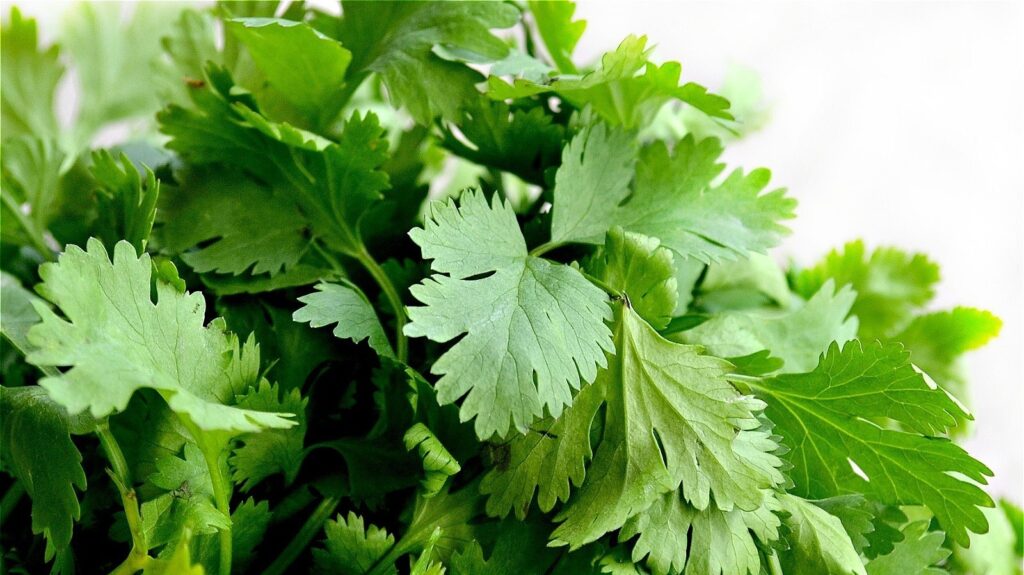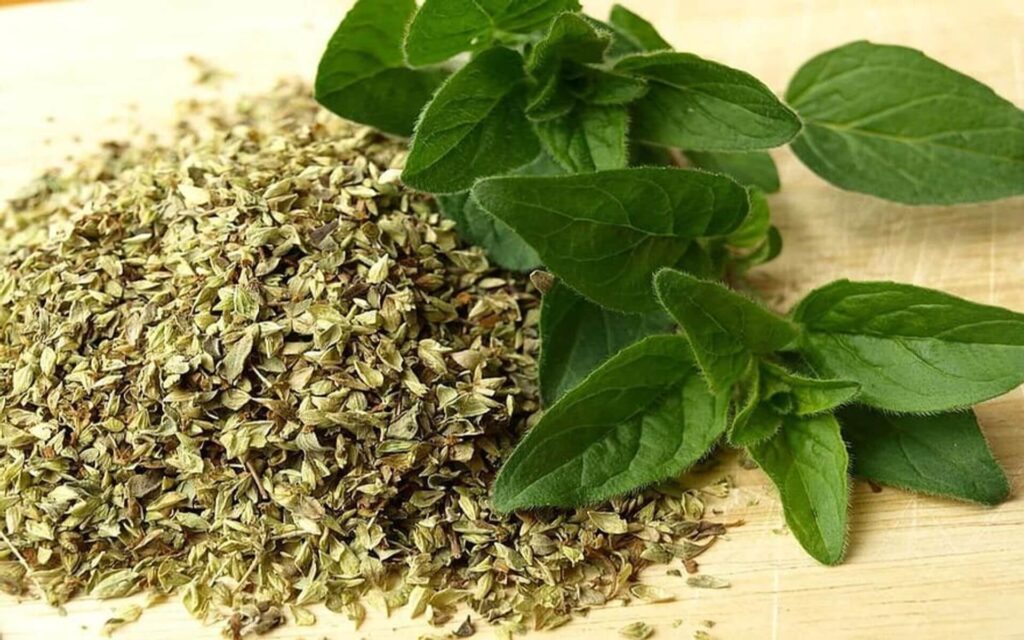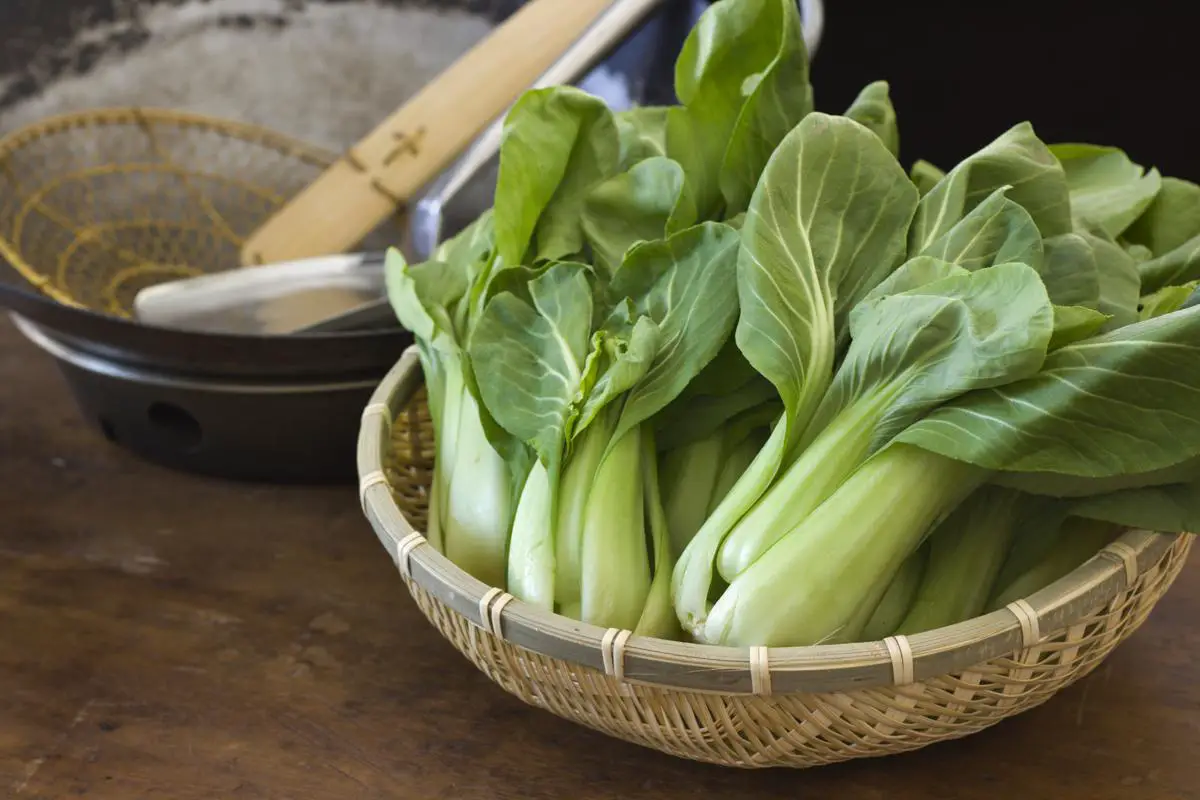Epazote or Chenopodium ambrosioides is one of the important Latin American herbs.
The leafy medicinal plant belongs to the Amaranthaceae species, amaranth, spinach, beets, and quinoa. [1]
Epazote is a flavorful and aromatic spice in many Latin American dishes. But excessive consumption of the herb may lead to serious side effects.
However, you don’t need to worry as some closest epazote substitutes can be used in your cooking.
Epazote herb plant grows up to 4 feet and yields green blossoms. The annual plant grows extensively in Central America — in Mexico and Guatemala.
The dark green Epazote leaves have a slender and pointed look. The leafy spice is also known as goosefoot, Hierba honda (“stinky weed”), Ipasote, Pazote, Pazoli, Apazote, Pilate, wormseed, or Mexican tea.
Both fresh and dried epazote leaves are used to season various dishes. For example, Guatemalan and Mexican dishes use fresh leaves and stems of the herb. Epazote goes well with potato dishes, egg recipes, soups, quesadillas, enchiladas, and moles. It has a spicy taste and aroma similar to anise, mint, Mexican Oregano, cilantro, and citrus flavor.
Epazote has good therapeutic benefits as well. It has numerous uses in folk remedies to treat parasitic infections, stomach cramps, gas, bloating, and liver disorders. [2]
Chefs recommend using epazote sparingly in the dishes as it has a strong flavor.
However, it would help if you also used it towards the end of the cooking process because too much heat can distort the herb’s flavor. Another good way to consume epazote is to drink its tea.
Epazote has a toxic substance, chenopodium, that adversely affects human health if consumed largely. In addition, many who dislike its strong, pungent flavor are reasons to look for epazote substitutes.
Here are some of the best epazote substitutes.
1. Cilantro
Cilantro or Coriandrum sativum belongs to the Apiaceae plant family along with parsley, carrot, celery, and 3,700 other species.
All parts of the annual herb are edible and have versatile uses in the culinary world. Cilantro is also known as Chinese parsley. The U.S. cilantro seeds are called coriander, and the leaves- are cilantro.
The most ancient use of cilantro as a spice date back to 6000 BC in Israel. Cilantro is an important ingredient in many savory dishes, soups, salads, etc. In addition, Mexican and Latin American dishes use cilantro as a popular substitute for epazote.
Cilantro flavor isn’t similar to epazote, but both herbs share a slight citrusy note. You can easily get fresh and dried cilantro in local groceries in the US.
Cilantro is a powerful antioxidant and has numerous health benefits. [3]
However, this substitute cannot provide the digestive benefits of epazote. The carminative effects of epazote can help digestion of beans items, relieve excessive gas formation, etc., which cilantro may not do.
The chefs recommend substituting 1:1 cilantro for epazote.
2. Fennel
Fennel has a licorice-like flavor and is not associated much with Mexican or Latin American cuisines. Fennel is native to the Mediterranean regions but may grow in most parts of the world. Fennel seeds, leaves, bulbs, and stalks flavor various dishes.
Fennel has a wide range of health benefits due to its rich nutrition value. [4]
Fennel is a good substitute for epazote for numerous factors — it has a popular licorice flavor note, it’s flavor is not as strong as epazote. Fennel, too, has beneficial effects on the digestion process like epazote.
You can alternate epazote with fennel in a 1:1 amount or adjust it according to your taste.
3. Mexican Oregano
Traditional Oregano belongs to the Lamiaceae mint plant family. It has a minty flavor note and is famous in Italian cuisine.
Mexican Oregano comes from the Verbenaceae plant family along with Lemon Verbena. It has a citrusy, earthy, or grassy flavor note.
Mexican Oregano is one of the most popular herbs in Mexican cuisine. Even though the citrusy note of this herb is quite different from epazote, Mexican Oregano is a good spice for seasoning and other savory dishes that call for epazote. The best reason to use Mexican Oregano as a substitute for epazote is perhaps to keep the Mexican dish’s authenticity
intact.
In the recipes, you may use a similar amount of Mexican Oregano as an alternative for epazote.
4. Lemon Verbena
Lemon verbena is a South American herb. It belongs to the same plant family Verbenaceae as Mexican Oregano. [5]
The lemony or citrus flavor of the herb makes it a good substitute for epazote. Lemon verbena is popularly used in meat and fish recipes. Many kinds of desserts, tea, and beverages also use lemon verbena as one of the primary ingredients.
Evidence supports the beneficial effects of lemon verbena in relieving inflammatory conditions. [6]
However, the herb may negatively affect digestive health, contrary to epazote.
5. Other Possible Substitutes for Epazote
Few other herbs and spices may work as alternatives for epazote in your Mexican dishes. These include — tarragon, anise, boldo, and dried epazote in case you don’t have the fresh ones.
Bottom Line
Epazote is one of the necessary ingredients in Mexican dishes — tortillas soup, beans, potato, egg recipes, etc. The herb is known for its strong, spicy flavor, which many people don’t like. Its toxic compound may affect health as well.
Other herbs such as cilantro, Mexican Oregano, fennel, lemon verbena, etc., may work as good substitutes for epazote. These alternative herbs may save the authenticity of the dishes due to their similar citrusy, earthy flavor note and health benefits.
Read Next: 5 Good Juniper Berry Substitutes for Your Recipes





